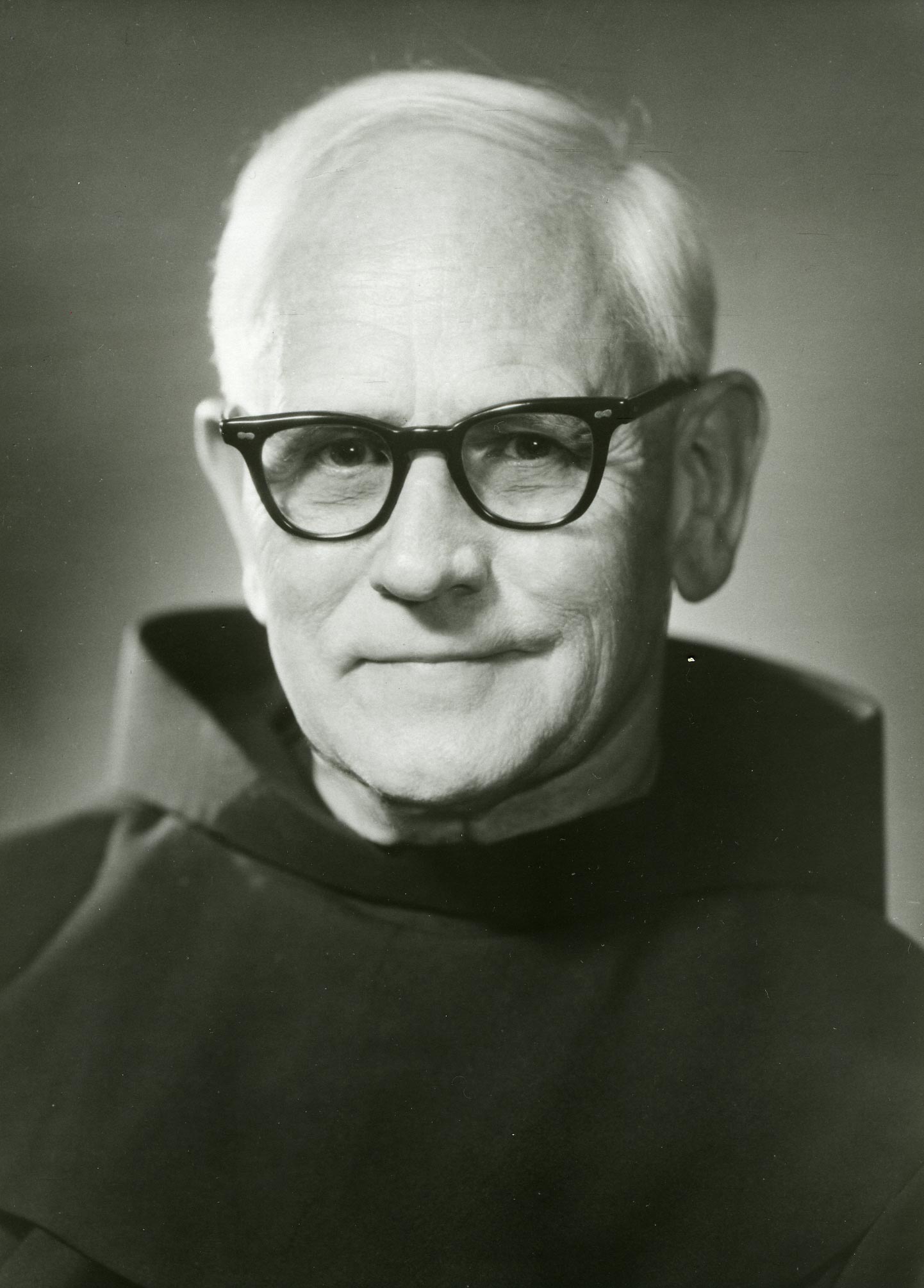|
Brother Cajetan Baumann, OFM |
|
"He was very mild in manner, and those who met him were impressed by the old-world graciousness and courtesy which characterized his thought and speech. Despite his professional prominence, Brother Cajetan by his own preference lived in a small cell without running water, in St. Francis Monastery on West 31st Street, and in turn served the community at table" (The Catholic News, May 15, 1969). |
| Brother
Cajetan Baumann, OFM, designed four major buildings for St. Bonaventure
University: Plassmann Hall,
SBU Friary (now Doyle
Hall), Christ the King
Seminary (currently Francis
Hall), and the SBU
Administration Building (formerly Hopkins Hall). Brother Cajetan was born in Gruenkraut, Germany on August 3, 1899. After spending two years in World War I with the engineers, he became a Franciscan and completed his novitiate at the Monastery of Our Blessed Lady of Fulda in 1923. He pronounced his final profession to Fr. Irenaeus Schoenherr at St. Bonaventure Friary in Paterson, New Jersey on July 16, 1926. In 1925, Brother Cajetan come to the United States as a skilled cabinet maker and wood carver. Using those talents, he earned a B.A. from St. Bonaventure University in 1941. Continuing his education, Brother Cajetan attended Columbia University for a Master of Science degree. Brother Cajetan became the first religious to ever be named to the American Institute of Architects, and he also possessed The National Council Certificate, which qualified him as an architect in all states. With those honors, he headed an architectural firm at 44 Whitehall St. in New York City for the Franciscan Order of Friars Minor designing many religious structures around the hemisphere. On May 9, 1969, Brother Cajetan died from a heart condition at University Hospital in New York City. Before his death, he was awarded honorary degrees from St. Bonaventure University, St. Francis College, Biddeford, Maine, and Rosary Hill College, Buffalo, NY. He designed many structures including churches, convents, schools, college residences, retreat houses, and seminaries.
|
||
| An essay by architect Tim Hullihan | ||
|
|
||
|
This site was created by Danielle Bell and Danielle Demetreu. |
||
